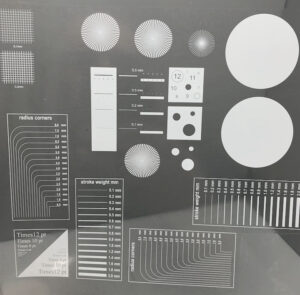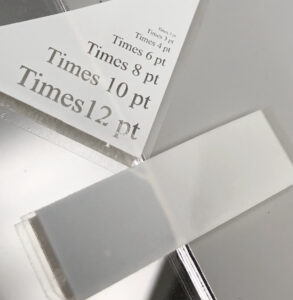What do you want your digital white to do for you?

Opaque white ink in the Digital world has a wide range of applications from simply creating a background to print on, creating opaque elements on metallic substrates to making graphics pop off dark backgrounds as well as giving a texture to printed elements. White ink can play many roles. Given the challenges of the Brand’s demands, white not only has to be opaque, but it may also have to be a particular shade of white for matching substrates or providing the right contrast for packaging graphics. On top of that, it must perform well in your operation. It must allow for overprinting of other inks and be able to adhere to substrates and inks.
Opacity is usually the key role of white, and depending on what it is printed on, it may be “opaque enough,” or it may need some help. If printing on clear pressure-sensitive substrates where the label will adhere to glass or plastic, there is a “wetting” out effect that needs to be considered. White can get very gray when adhered to a bottle. The color of the product behind the label also needs to be considered. In the flexo world, more opacity comes from higher volumes and multiple layers, which can mean the difference in profit or no profit! Rotary Screen is also a common approach to increased opacity. The Digital arena is a bit more complicated. Inkjet vs. toner, UV vs. water-based, print head dpi, and technology and ink formulation are all considerations when choosing the technology to provide you with the best opacity. The level of print detail with white graphics can suffer when a heavy volume of ink and high speeds are used. There are trade-offs to consider when determining if a technology can both print high quality with the highest resolution or can higher opacity be achieved with lower-resolution graphics.

Durability can be important for your customers when it comes to white inks. If a laminate or heavy overprint varnish does not protect them, they can be damaged on application lines as well as in transit or from product exposure. Determining if your digital white can withstand the downstream requirements is very important as all whites and all digital print processes do not have the same level of durability.
Hue or the color of your white sometimes can be an issue, especially if you need to match another print process or a particular substrate or element of a package. Most times, white is white, but there are subtle differences, and when compared side by side, the difference can be significant. With Flexo, white can be tinted to match. With Digital many times the white “is what it is.” Sometimes it can be overprinted with color to compensate for the hue difference, similar to what is done with some digital proofing systems. Just another area to look at when determining what is the best digital technology for your operation.
Of course, Productivity and cost cannot be ignored. Margins in digital printing are very tight, and ink cost is most likely the largest percentage of cost in a digital label. Sometimes it is best to use Flexo if the white is a common element to otherwise variable graphics. Having a hybrid press benefits both for a wider range of applications. The cost of white ink is typically higher than other inks, so be sure to factor that into your ROI. Also, look at the technology; the ink cost as a unit of measure does not tell the full story. Run some trials and gather the data from the test runs. A higher-cost ink might give you a better result with less ink than a lower-cost ink. This holds true for the other colors as well but is especially important with digital opaque white inks.

